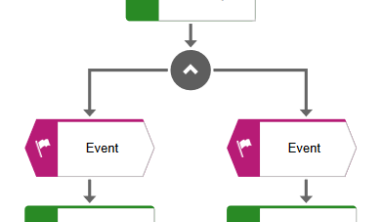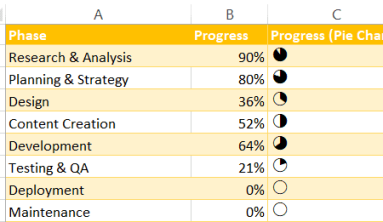Successful app marketing depends on an array of platforms within a tech stack and how they are connected. Within that architecture, attribution — which credits a marketing activity that delivered a desired goal — is the key. Only with accurate and granular attribution data can you identify which marketing campaigns work and meet your goals, and which do not.
But the attribution story doesn’t start and end there…sophisticated app marketers understand that there are multiple attribution models that they can capitalize on to pinpoint data-driven decisions and marketing strategies. Many also use refined attribution techniques to understand the relative value of different touchpoints within the customer journey.
What is an attribution model?
An attribution model is a mechanism used to determine the value of different marketing efforts, whether an in-app advertisement, an ad on social media or an email campaign. Attribution models aren’t just for mobile marketers — they’re simply a variation on marketing attribution models in general, which are a lynchpin of digital marketing no matter what the context.
Marketing attribution models tell stories with data. In marketing speak, they follow the “customer journey.” Leveraging them successfully is all about making comparisons between the various activities — separately or combined.

Within the fragmented setting of mobile, a marketer can see clearly which promotions perform well on particular networks or channels. Those data points are critical details in the “story” — the full arc of the role of a specific promotion whether a paid media source or another channel like email — that drives user acquisition, revenue, and ultimately ROAS.
But when users might install an app at any number of points of exposure with your brand and/or app (the first time they see a promotion, the second, or the fifth), it’s tricky to figure out which source (or sources) gets the credit for that install and is paid for it.
Within marketing attribution models, there are complex questions that challenge even the best minds in the business.
Your job is to understand different kinds of attribution models and which provide the data that you need in a particular context. You also need to understand the flaws of each.
Let’s start with the basics.
First-touch attribution model
If you think of attribution as a way to assign credit for an engagement to a media source, then a first-touch attribution model assigns credit to the very first time a user engages with an ad (also known as the first touchpoint). The media source responsible for that first engagement gets paid for it, no matter how many more ads it takes for the customer to install or convert.
The simplicity of first-touch attribution is its main advantage, plus the fact that it’s a great way to measure top-of-the funnel (demand gen) efforts. But it’s very limited in terms of optimization, which is crucial in mobile marketing. What’s more, it’s not an accurate or even fair way to approach attribution when many mobile users require repeated exposure to an app before converting.
Given the sophistication of other attribution models at this stage in the game, first-touch attribution is not very advanced, but it does have its virtues: it’s easy to implement, simple to interpret, and it sheds light on how top-of-the-funnel exposure leads to conversions. It’s not used in app marketing frequently, but it’s still important to understand as a conceptual starting point with attribution modeling.
Last-touch attribution model
Like a first-touch attribution model, a last-touch attribution model — also known as a last-interaction attribution model — gives the credit (and pays for) a single touch point — in this case the very last one before the user installs or completes the desired action.
For example, a hyper casual mobile gamer would go through this progression in terms of ads seen for another hyper casual game:
- Day 1: A click on an ad that appeared in media source 1 but no install
- Day 2: A click on an interstitial ad for the same game in media source 2 but no install
- Day 4: A view of a rewarded video for the same game in media source 3 an an install
Under the last-touch attribution model, media source 3 gets the full credit for the install.
For years now, mobile advertising has been largely rooted in the last-touch attribution model. The industry has scaled to the degree that it has because of last-touch, but it’s problematic.
Most installs are a result of a progression of ads, meaning each of them has value, but with last-touch, only the final click gets the credit. Because marketing is fractured across multiple channels, formats, platforms and devices, the last-touch model undervalues the preceding touchpoints while overvaluing the final one.
It doesn’t take into account the incremental impact of each touch point preceding the last.
While there is something to be said for simplicity, the last-touch attribution model oversimplifies a complex story. It obscures your true ROI.
Last non-direct attribution model
The last non-direct attribution model (also known as non-direct click attribution) is quite similar to the last-touch attribution model, but it attributes all of the conversion value to the last marketing activity — not the last touchpoint — the customer clicked through before converting.
It’s used primarily in the context of web attribution, which is the process of identifying web touch points that lead to a conversion, and when paired with a mobile attribution model can provide a complete picture of the customer journey.
A progression might go like this:
- A user clicks on a Google ad directing them to a website and then performs a web event. Later, the user visits the website again directly, performs an event and makes a purchase.
- The purchase is attributed to Google Ads because the model is last non-direct.
The value in this model is that it filters out direct traffic, which is much harder to optimize towards. Many advertisers relate direct traffic to users who already were impacted by a previous marketing effort.
Multi-touch attribution model
Now that we’ve established the advantages and disadvantages to first-touch, last-touch, and last non-direct attribution, let’s explore the multi-touch attribution model.
With multi-touch attribution, every touchpoint along the way from first impression to install, is built into the assessment. When each touchpoint is acknowledged as a reminder to the user, varying weights can be assigned every step along the way to conversion.
Within a single device app consumer journey, multi-touch attribution is often referred to as “assisted installs” because each touchpoint pushes the user closer to conversion, whether that’s an install, purchase, or other in-app event. You might also hear it referred to as “fractional attribution.”

Multi-touch attribution can be limited to a single channel (a single mobile device) or span multiple channels (e.g. mobile phone, tablet, desktop, and TV).
When you look at the attribution data from the multi-touch perspective, you gain insight into which media sources influenced users on what device and where in the funnel. From there you can make smart media and budget allocation decisions.
For example, imagine that a sponsored ad campaign on Twitter that drives 2,500 last-click installs. The last-click is important, but so too are the 1,000 high quality assists, even if other media sources (e.g. Facebook, Google Search) led to the last-click install.

When you can identify those high quality assists that get the customer closer to conversion, then you can give them credit, determine their value in the customer journey, and budget accordingly.
Within the multi-touch attribution model there are three primary models:
- The linear model assigns equal value to each touchpoint along the way to install or conversion. It’s a simple way to give credit to touchpoints in the customer journey (which many regard as linear). It makes budgeting for media sources and campaigns relatively straightforward.
-
Then there’s the time decay model, which starts with the proposition that not all touch points in the customer journey have the same value. It also gives more credit to the touch point closest to conversion.
For example, imagine that you run campaigns on Network A, Network B, and Network C. With time decay attribution, you can see that Network A and Network C do the best with assists, early in the funnel. Network B, however, seals the deal — it drives the most conversions. Then you know that Network A and Network C have value in that they propel the customer forward in the journey, but Network B is more valuable because it closes the deal with conversion.
-
Like the time decay model, the U-shaped attribution model (so-called because when it’s graphed, the way in which credit is assigned forms a U) helps to identify which media are the most effective at certain points in the funnel. It differs, however, in that it divides credit among multiple touchpoints: the first and the last get 40% attribution credit and every touchpoint in between — the assists — shares the remaining 20%.
If you regard the first and last touch points (brand awareness and conversion, respectively) as the most powerful within the customer journey, but you still want to give some credit to every other assist along the way (again, incrementality), then U-shaped attribution might be the way to go.

Custom Attribution Model
Finally, there’s custom attribution, an app marketing strategy that works well for apps that already have robust, sophisticated measurement in place and a seasoned team that is ready to take it to the next step.
Naturally defining your own attribution rules within the customer journey starts with an intimate understanding of your users, your customers’ journeys in relation to your monetization strategy, and as many details as you can gather about your competitors within your vertical.
With a custom attribution model, you can get incredibly granular with your analysis, for example by assigning a proportional value to every touchpoint; the touchpoint (or channel) that was most influential in the path toward conversion gets the most credit, the second most influential gets the second most credit, and so on. No matter where the most powerful touchpoint is in the customer journey — first, last, 3rd, or 23rd — it gets the most credit.
Note, however, that customizing attribution doesn’t just take expertise, manpower, and aggressive optimization. It’s complicated, and the more complicated an attribution model is, the more likely it is to introduce errors to your analysis.
To sum up, attribution modeling is the bedrock of marketing, and in mobile particularly, it is critical to gaining a competitive edge. Depending upon the habits of your users and your monetization strategy, it might be clear which model is the best one to go with. But you can also experiment. Compare the results of several to see which one you can best optimize, and keep in mind that the more sophisticated the model, the more resources it will likely take to apply it.






